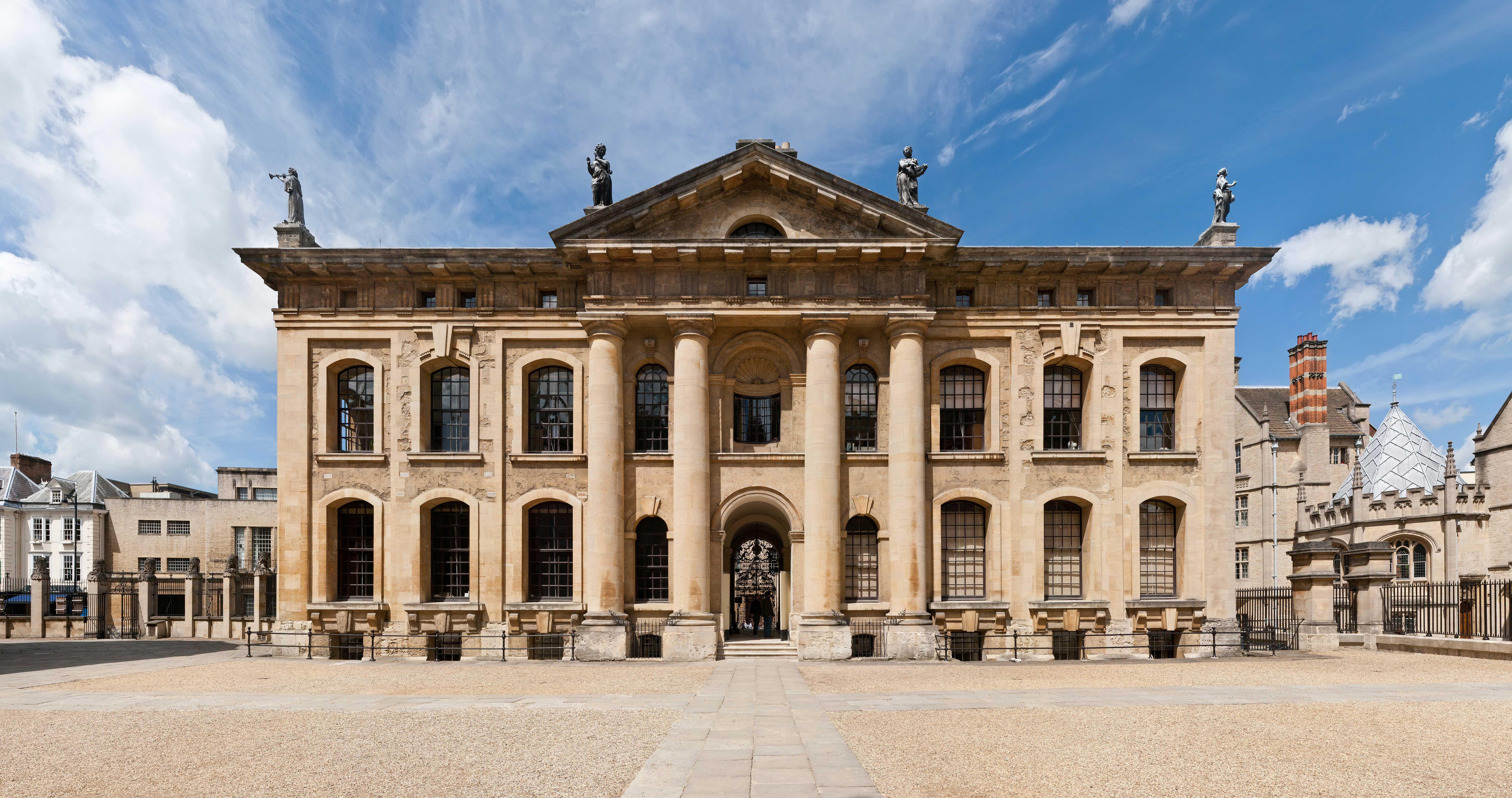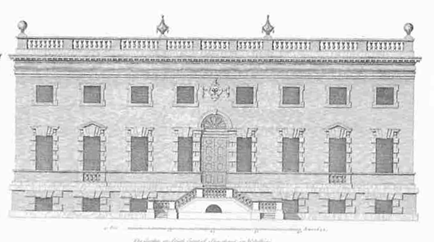|
1715 In Architecture
The year 1715 in architecture involved some significant events. Buildings and structures Buildings * The Clarendon Building at the University of Oxford, England, designed by Nicholas Hawksmoor, is completed. * :File:Oxford university The Queen's College by Fenlio.jpg, Chapel and Hall, The Queen's College, Oxford, England, designed by George Clarke after Hawksmoor, structurally completed. * St Philip's Cathedral, Birmingham, England, designed by Thomas Archer is consecrated as a parish church. * Many coastal artillery, batteries and redoubts are built in Malta. Surviving examples include Saint Mary's Battery, Qolla l-Bajda Battery, Briconet Redoubt and Vendôme Tower. *Filippo Juvarra starts working on the previously postponed construction of the church of Santa Cristina, Turin, Santa Christina in Turin. *Filippo Juvarra starts rebuilding the church of San Filippo Neri, Turin in which the roof had collapsed during the siege of Turin during the War of the Spanish Succession. *Fo ... [...More Info...] [...Related Items...] OR: [Wikipedia] [Google] [Baidu] |
Briconet Redoubt
Briconet Redoubt ( mt, Ridott ta' Briconet), also known as Marsaskala Redoubt ( mt, Ridott ta' Marsaskala) or the Vendôme Entrenchment ( mt, It-Trunċiera ta' Vandomu), is a redoubt in Marsaskala, Malta. It was built in 1715 by the Order of Saint John as one of a series of coastal fortifications around the Maltese Islands. Until recently, the redoubt was used as a police station. History Briconet Redoubt was built in 1715 as part of the first building programme of coastal batteries and redoubts in Malta. It formed part of the defences of Marsaskala Bay, which also included the large St. Thomas Tower and Battery and the now-demolished Żonqor Tower. Briconet Redoubt's structure is typical of most other coastal redoubts built in Malta. It consists of a pentagonal platform having short flanks, and a rectangular blockhouse sealing off the gorge. Unlike other redoubts, the gorge and flanks have high boundary walls pierced by musketry loopholes. These were built to defend the redo ... [...More Info...] [...Related Items...] OR: [Wikipedia] [Google] [Baidu] |
1715 Works
Events For dates within Great Britain and the British Empire, as well as in the Russian Empire, the "old style" Julian calendar was used in 1715, and can be converted to the "new style" Gregorian calendar (adopted in the British Empire in 1752 and in Russia in 1923) by adding 11 days. January–March * January 13 – A fire in London, described by some as the worst since the Great Fire of London (1666) almost 50 years earlier, starts on Thames Street when fireworks prematurely explode "in the house of Mr. Walker, an oil man"; more than 100 houses are consumed in the blaze, which continues over to Tower Street before it is controlled. * January 22 – Voting begins for the British House of Commons and continues for the next 46 days in different constituencies on different days. * February 11 – Tuscarora War: The Tuscarora and their allies sign a peace treaty with the Province of North Carolina, and agree to move to a reservation near Lake Mattamus ... [...More Info...] [...Related Items...] OR: [Wikipedia] [Google] [Baidu] |
Vitruvius Britannicus
Colen Campbell (15 June 1676 – 13 September 1729) was a pioneering Scottish architect and architectural writer, credited as a founder of the Georgian style. For most of his career, he resided in Italy and England. As well as his architectural designs he is known for ''Vitruvius Britannicus'', three volumes of high-quality engravings showing the great houses of the time. Early life A descendant of the Campbells of Cawdor Castle, he is believed to be the Colinus Campbell who graduated from the University of Edinburgh in July 1695.page 7, Catalogue of the Drawings Collection of the Royal Institute of British Architects: Colen Campbell, John Harris 1973, Gregg International Publishers Ltd He initially trained as a lawyer, being admitted to the Faculty of Advocates on 29 July 1702. He travelled in Italy between 1695 and 1702, and is believed to be the Colinus Campbell who signed the visitor's book at the University of Padua in 1697. He is believed to have trained in and studie ... [...More Info...] [...Related Items...] OR: [Wikipedia] [Google] [Baidu] |
Thaxted
Thaxted is a town and civil parish in the Uttlesford district of north-west Essex, England. The town is in the valley of the River Chelmer, not far from its source in the nearby village of Debden, and is 97 metres (318 feet) above sea level (where the parish church stands). The town is north from the county town of Chelmsford, and east from the M11 motorway. The parish contains the hamlets of Cutlers Green, Bardfield End Green, Sibleys Green, Monk Street, and Richmond's Green. Much of its status as a "town" rests on its prominent late medieval guildhall, a place where guilds of skilled tradesmen regulated their trading practices, and its English Perpendicular parish church. History According to ''A Dictionary of British Place Names'', Thaxted derives from the Old English ''thoec'' or ''þæc'' combined with ''stede'', being a "place where thatching materials are got". In the 1086 '' Domesday Book,'' the settlement is referred to as 'Tachesteda' and in subsequent official ... [...More Info...] [...Related Items...] OR: [Wikipedia] [Google] [Baidu] |
Carlo Francesco Bizzaccheri
Carlo Francesco Bizzaccheri (13 April 1655 Rome - 11 February 1721 Rome) was an Italian architect. He worked in a Baroque and early Rococo style.Nina A. Mallory, ''Carlo Francesco Bizzacheri (1655-1721)'', in: Journal of the Society of Architectural Historians 33, 1974, pp. 27-47. Biography Bizzaccheri trained under the architect Carlo Fontana and possibly also under Carlo Rainaldi. In 1684 he became a member of the Virtuosi al Pantheon, 1712 its "Reggente". He was also a member of the Accademia di San Luca from 1697. As house architect of prince Giovanni Battista Pamphili Aldobrandini, he built the entrance gate and garden wall of the Villa Aldobrandini in Frascati, accomplished in 1693. He also designed the tomb monument erected by the prince from 1705–07 to his ancestor ''Cardinal Cinzio Aldobrandini'' in San Pietro in Vincoli. The sculpture of a winged skeleton and a pair of putti on this monument are by Pierre Le Gros the Younger. From 1695 he succeeded Giovanni Anto ... [...More Info...] [...Related Items...] OR: [Wikipedia] [Google] [Baidu] |
Fountain Of The Tritons
The Fountain of the Tritons (Italian: ''Fontana dei Tritoni'') is a fountain in Rome (Italy), Piazza Bocca della Verità, in front of the basilica of Santa Maria in Cosmedin. This fountain should be distinguished from the similarly named nearby Triton Fountain (''Fontana del Tritone'') by Gian Lorenzo Bernini, in the Piazza Barberini, with only a single Triton. History The building, starting from 1610, of the last Roman aqueduct, the ''Acqua Paola'', didn't move to the background the two aqueducts built just a few years before (the ''Aqua Virgo'' in 1570 and the ''Acqua Felice'' in 1587), which gave the possibility to erect new fountains on the branches that guaranteed a more widespread distribution of water in the whole town. A secondary branch of the ''Acqua Felice'' reached the area south of the Tiber Island: here, between ancient and middle-age monuments (the Arcus Argentariorum, the Arch of Janus, the Temple of Hercules Victor, the Temple of Portunus and the basilica of San ... [...More Info...] [...Related Items...] OR: [Wikipedia] [Google] [Baidu] |
War Of The Spanish Succession
The War of the Spanish Succession was a European great power conflict that took place from 1701 to 1714. The death of childless Charles II of Spain in November 1700 led to a struggle for control of the Spanish Empire between his heirs, Philip V of Spain, Philip of Anjou and Charles VI, Holy Roman Emperor, Charles of Austria, and their respective supporters, among them Spanish Empire, Spain, Habsburg monarchy, Austria, Kingdom of France, France, the Dutch Republic, Savoyard state, Savoy and Kingdom of Great Britain, Great Britain. Related conflicts include the 1700–1721 Great Northern War, Rákóczi's War of Independence in Kingdom of Hungary (1526–1867), Hungary, the Camisards revolt in southern France, Queen Anne's War in North America and minor trade wars in colonial India, India and New Spain, South America. Although weakened by over a century of continuous conflict, Spain remained a global power whose territories included the Spanish Netherlands, large parts of Italy, ... [...More Info...] [...Related Items...] OR: [Wikipedia] [Google] [Baidu] |
San Filippo Neri, Turin
San Filippo Neri is a late-Baroque architecture, Baroque style, Roman Catholic church located in Turin, region of Piedmont, Italy. The church is located on Via Maria Vittoria 5; the left flank of the nave faces the Turin Academy of Sciences. The church is still used for services. long and wide, it is the largest church in the city of Turin. History The church was commissioned late in life by Charles Emmanuel II, Duke of Savoy, and completed after his death in 1675 with the patronage of his widow Marie Jeanne Baptiste of Savoy-Nemours, Maria Giovanna Battista of Savoy-Nemours. The original design was by Antonio Bettini, however, the roof of this original church collapsed in 1706 during the fierce Siege of Turin by French forces. The church was rebuilt (1715-1730) according to designs by Filippo Juvarra. The main altar (1703) was designed by Antonio Bertola with six Solomonic columns surmounted by statues of ''Faith'' ''Hope'' and ''Charity'' by Carlo Francesco Plura. The altarpie ... [...More Info...] [...Related Items...] OR: [Wikipedia] [Google] [Baidu] |
Turin
Turin ( , Piedmontese: ; it, Torino ) is a city and an important business and cultural centre in Northern Italy. It is the capital city of Piedmont and of the Metropolitan City of Turin, and was the first Italian capital from 1861 to 1865. The city is mainly on the western bank of the Po River, below its Susa Valley, and is surrounded by the western Alpine arch and Superga Hill. The population of the city proper is 847,287 (31 January 2022) while the population of the urban area is estimated by Eurostat to be 1.7 million inhabitants. The Turin metropolitan area is estimated by the OECD to have a population of 2.2 million. The city used to be a major European political centre. From 1563, it was the capital of the Duchy of Savoy, then of the Kingdom of Sardinia ruled by the House of Savoy, and the first capital of the Kingdom of Italy from 1861 to 1865. Turin is sometimes called "the cradle of Italian liberty" for having been the political and intellectual centre ... [...More Info...] [...Related Items...] OR: [Wikipedia] [Google] [Baidu] |






